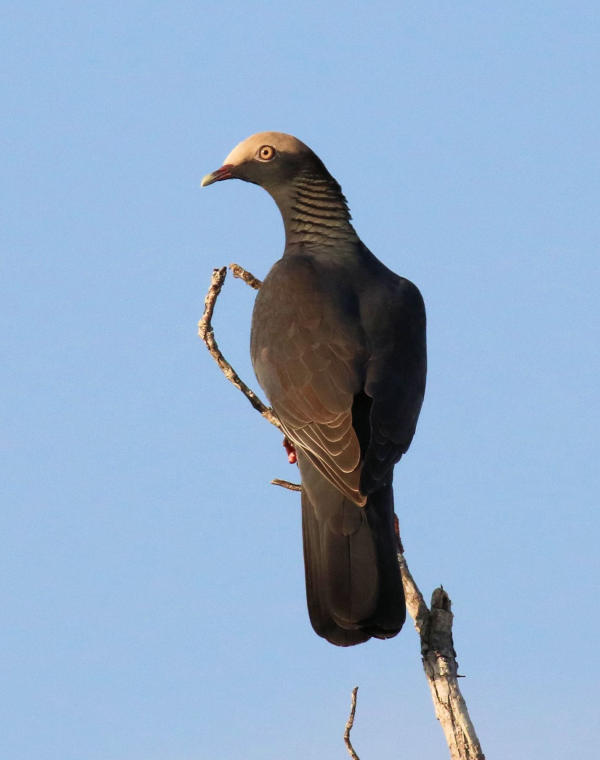
White-crowned Pigeon
|
With one slight twist of the lens, the image in the spotting scope went from “perched dark bird, maybe a rare pigeon” to White-crowned Pigeon. Cranking the magnification from 20x to 45x made the difference for the identification, and the clarity and brightness of the image didn’t suffer one bit as the magnification increased. A zoom lens on your spotting scope can be invaluable for bringing in a distant image to reveal the field marks you want to see.
Think about it this way: you are scanning a distant flock of shorebirds on the far side of a pond. There’s no way you can get closer because of the water. But, if you want to pick out the White-rumped or Baird’s Sandpiper among the 500 Western Sandpipers, you’re going to need some help. A zoom lens can do the job.
Zoom lenses got a bad rap early in their development, deservedly so in some cases because as the magnification increased, the quality of the image, especially at the edge of the view, decreased significantly. The image got bigger but it was often fuzzier. Today’s lenses have largely eliminated this drawback and provide crisp clear images even at high magnification.
There are some drawbacks to zoom lenses, such as a smaller field of view compared to a wide-angle lens, and a smaller depth of field. If those considerations don’t bother you, adding a zoom lens to your spotting scope can provide better views of distant birds so you can better identify and enjoy them.
Article by Peter Stangel